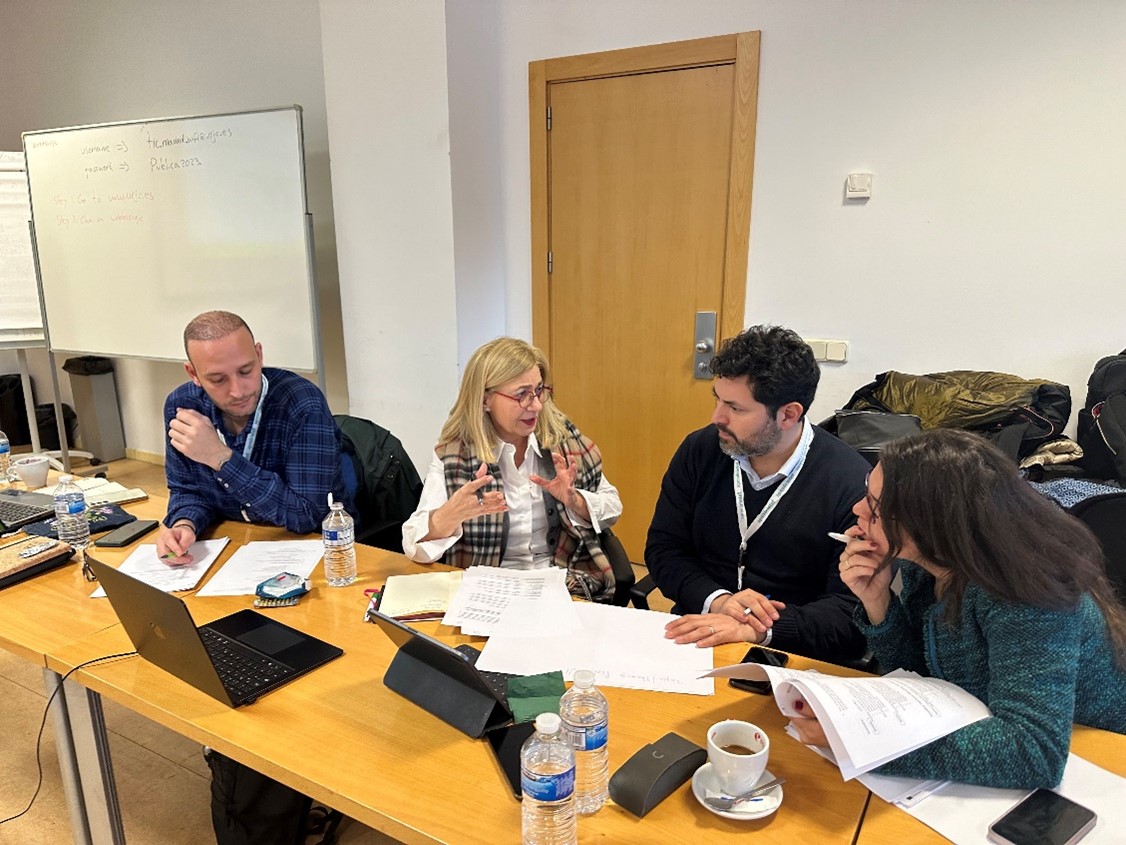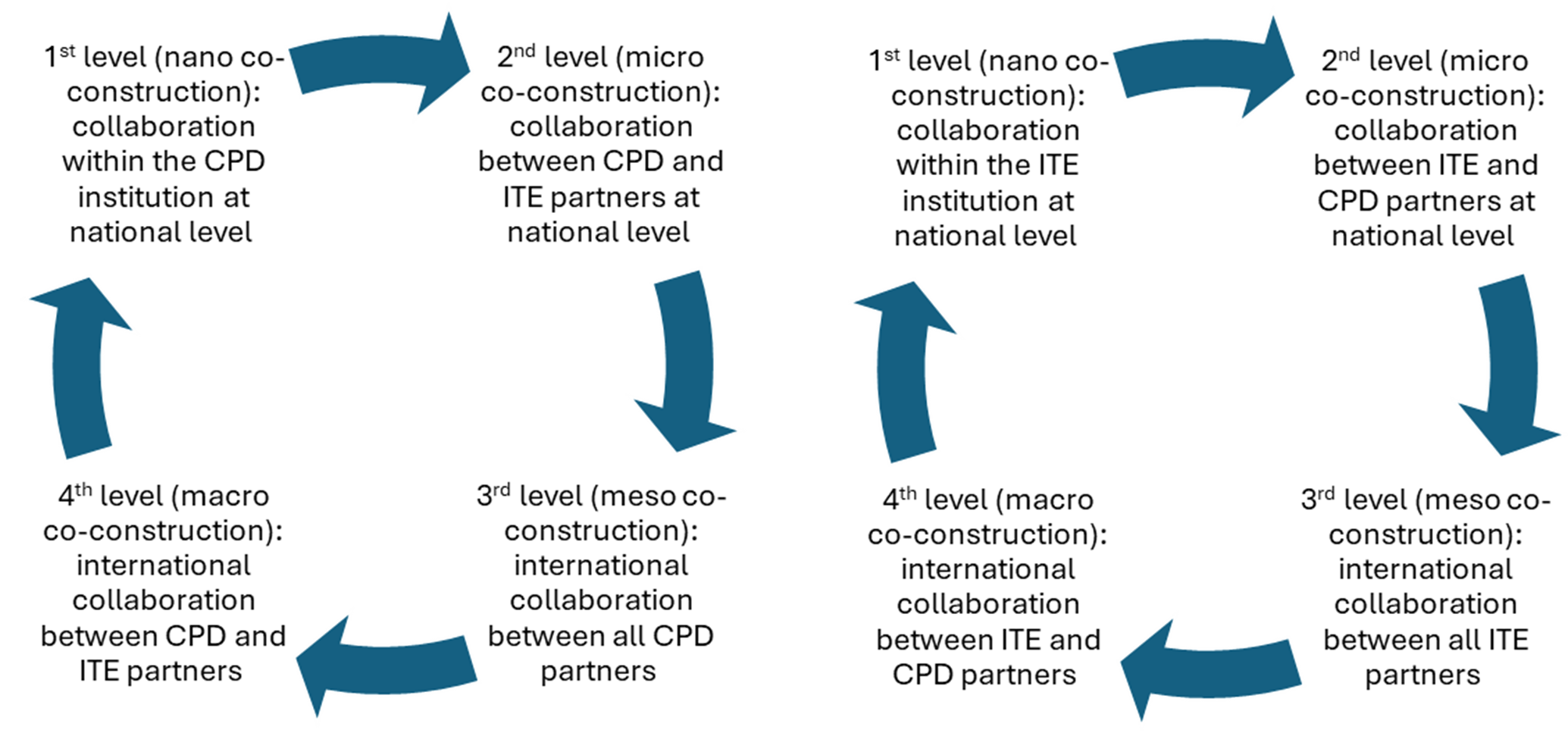This website use cookies to ensure you get the best experience on our website
ContinueUP Development Diary #1
How do we define “co-creation”?

ContinueUP Development Diary is a series of articles updating initial teacher educators (ITE), continuous professional development (CPD) trainers, as well as teachers about the progress made in the development of the ContinueUP project; In this series we explain the challenges encountered and how we address them, evaluating the complex process of co-creation that involves ITE and CPD providers from three countries.
How do we define “co-creation”?
By working together, initial teacher education (ITE) and continuous professional development (CPD) providers can learn a lot and complement each other. For instance, ITE providers might be more aware of developments in education theory and research, while CPD providers might have more practical insights from schools. Moreover, ensuring a clear continuous path of learning for teachers across different stages of their career is essential to develop teachers as lifelong learners. To achieve this, ITE and CPD providers need to collaborate more closely. Therefore, the ContinueUP project encourages ITE and CPD providers to engage in a process of working together to co-create and co-deliver a continuous teacher education programme.
The programme consists of two parts:
1. an ITE Module aiming to develop professional engagement using digital resources, taught as an elective course at the university.
2. a CPD MOOC that picks up professional engagement, where the ITE Module has left off.
Main goals:
The co-creation and co-delivery will achieve three things:
1. By working together, the ITE content will be better linked to the CPD content, promoting the continuity for teachers’ professional development journey.
2. The program will be cost-effective because ITE and CPD providers from different countries will benefit from each other’s expertise.
3. ITE and CPD providers will develop collaborative cultures. They will draw lessons out of their co-creation, and set an example for other educators, encouraging them to start similar collaborations.
The project benchmark
As soon as the project started in 2023, partners understood the need to operationalise co-creation, co-delivery and continuity. This was achieved by organizing the collaboration across different dimensions (Figure 1): (1) internal institutional collaboration (e.g. collaboration between colleagues inside a university) 2) national collaboration across the divide of ITE and CPD providers, (3) international collaboration between the same type of provider profile (e.g. ITE providers), and (4) international collaboration across the divide of ITE and CPD providers.

Figure 1 Four layers of collaboration in ContinueUP
To organise the work in the most meaningful and efficient way, partners started the process by agreeing on a list of common principles for co-creation, co-delivery and continuity (internal draft). They decided that this will be their benchmark, to which they will refer back to at regular “reflection meetings” to discuss: Is their actual co-creation work in line with the principles they defined at the beginning? , Did they discover new ideas and learn new lessons along the way?.
If partners conclude in these meetings that it is necessary, their benchmark will be updated. At the end of the project, partners will develop a co-creation guide, based on the final form of the benchmark and the insights they obtain by reflecting on their own co-creation work.
The principles discussed and present in the benchmark address many aspects that are important for multiple stakeholders, cross-country collaboration. For instance, since both, the education context, and the national requirements for the format of training/education vary across countries, partners acknowledged this diversity and accepted that this will require them all to make compromises on certain points.
Partners also agreed to maintain a balance between meaningful co-creation and feasibility; while co-creation should go beyond task division, involving all partners should be limited to aspects that are most likely to have a significant impact on the co-creation and co-delivery process.
Another agreement was that the co-delivery should consist of collaborative teaching, joint assessment of student tasks and regular coordination between the partners during co-delivery, among other things.
After defining its three goals and setting the benchmark principles, partners rolled up their sleeves to work on the learning objectives and on the outline of the ITE Module and CPD MOOC. They are meeting regularly to develop the content, but they agreed to take a moment to reflect on the process at the first study visit of the project in Spain. The next diary entry will explore the outcomes from this study visit.